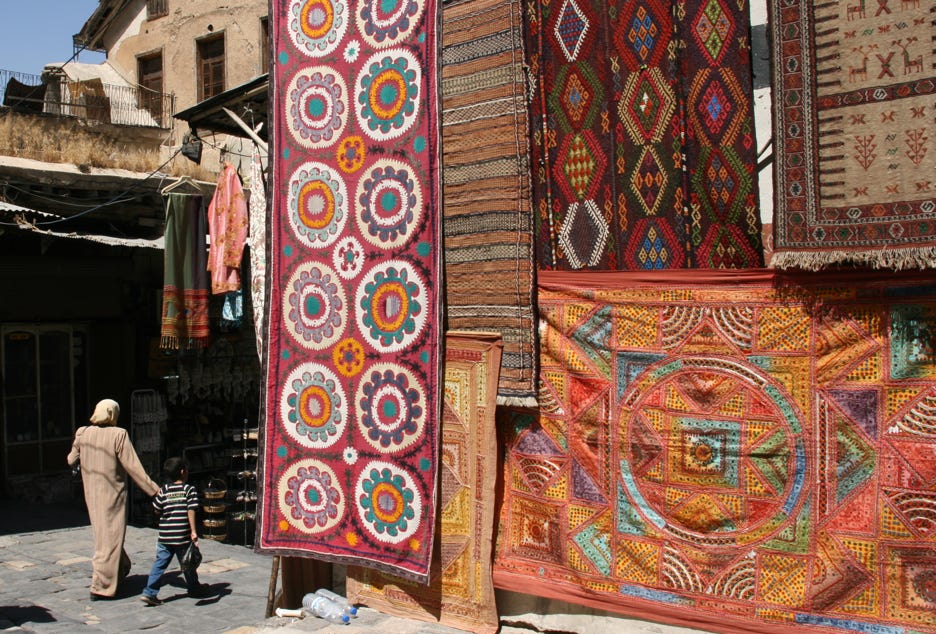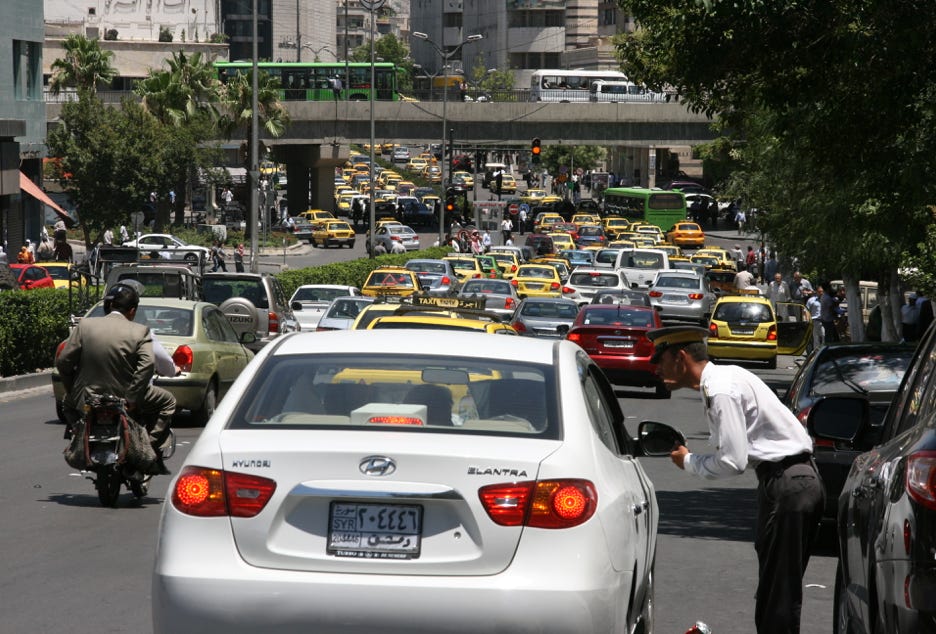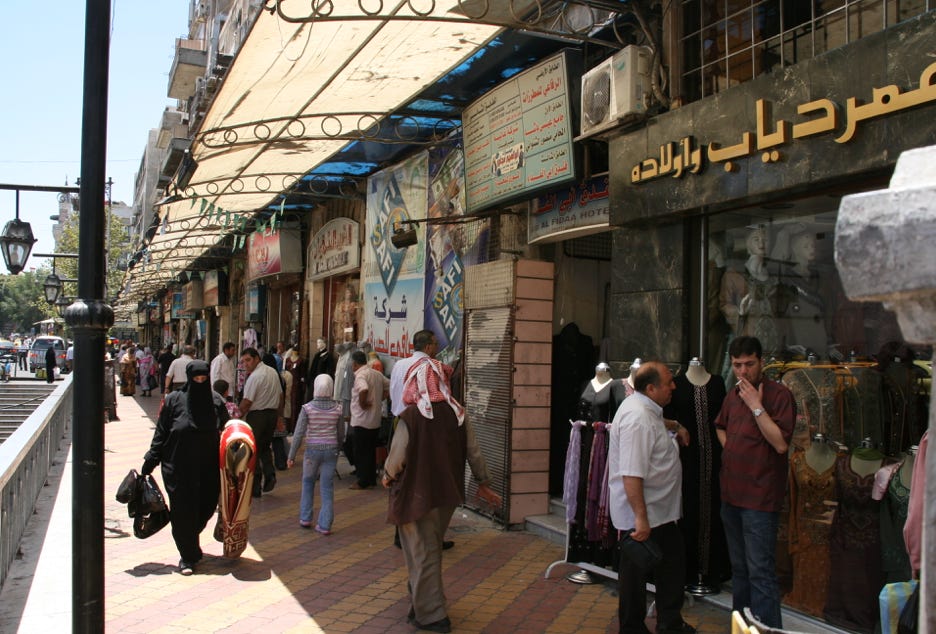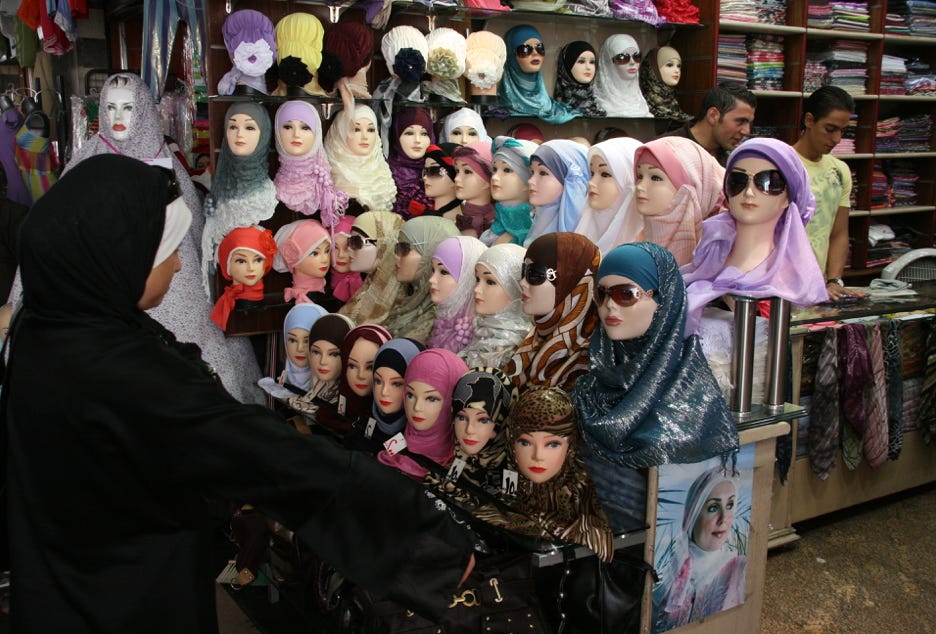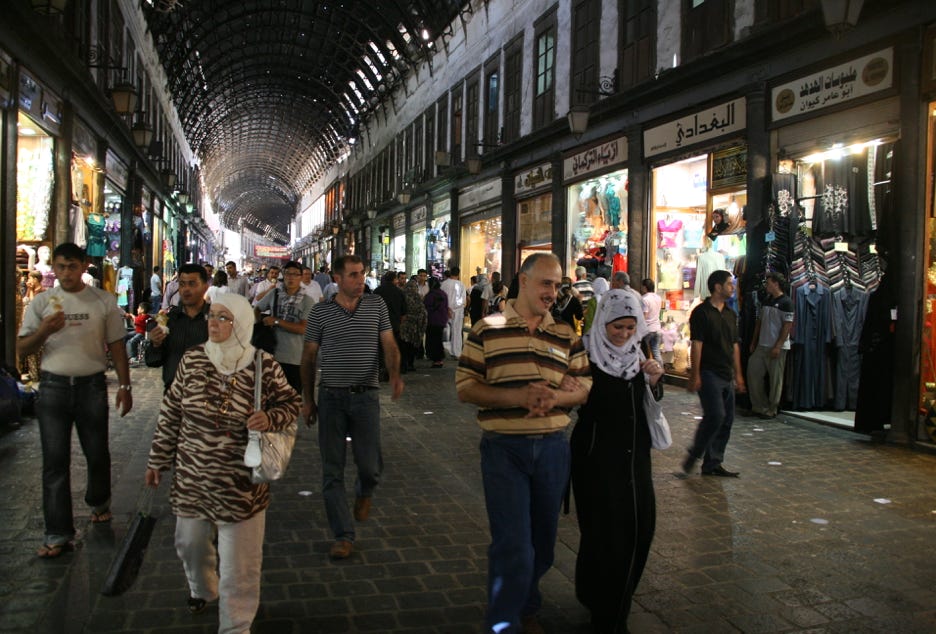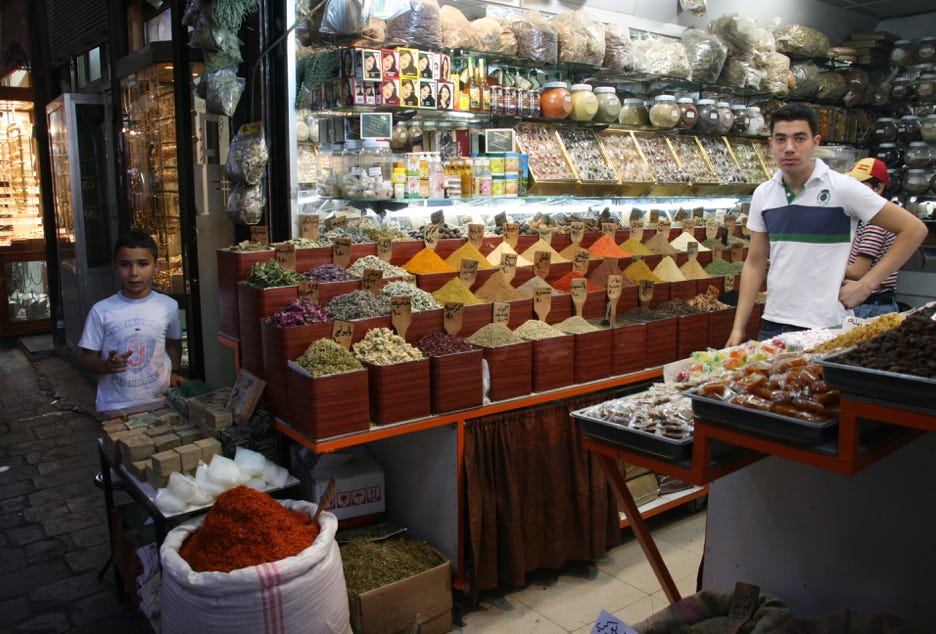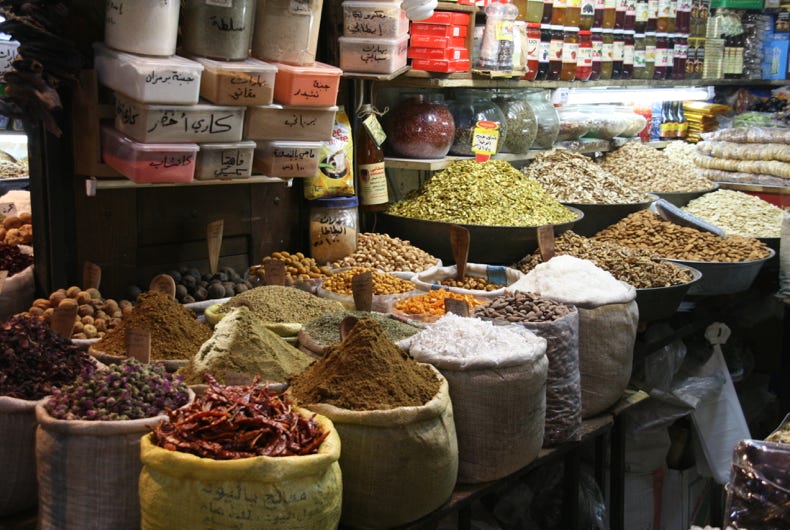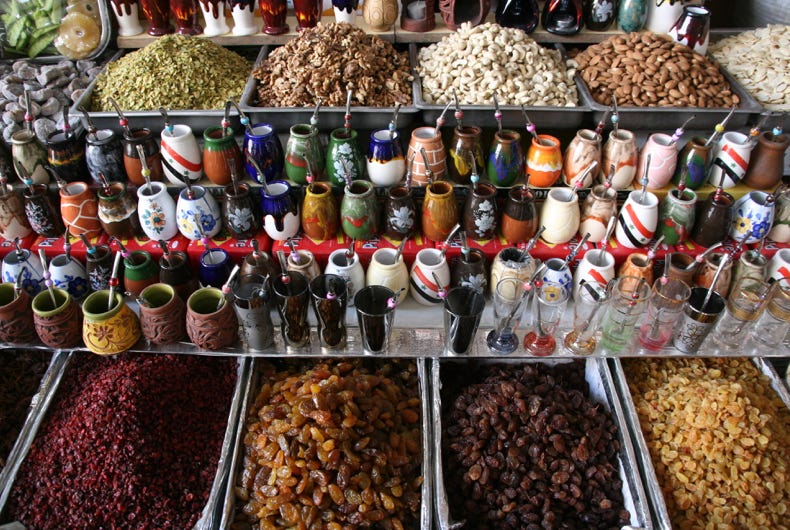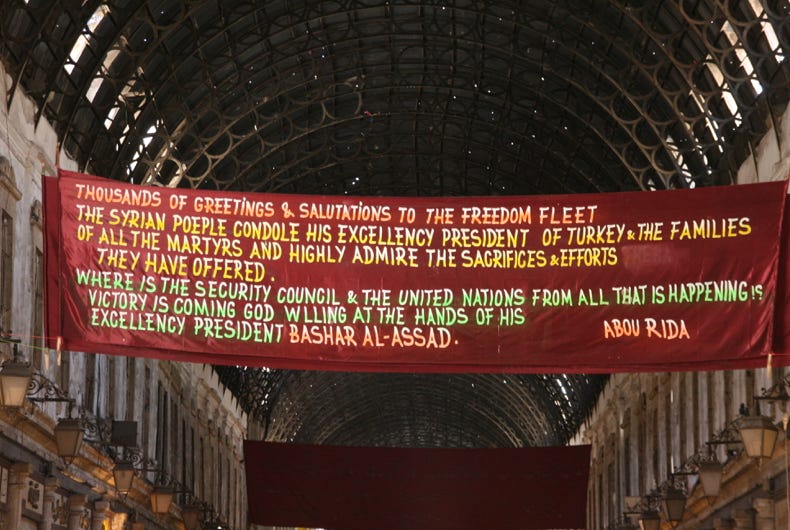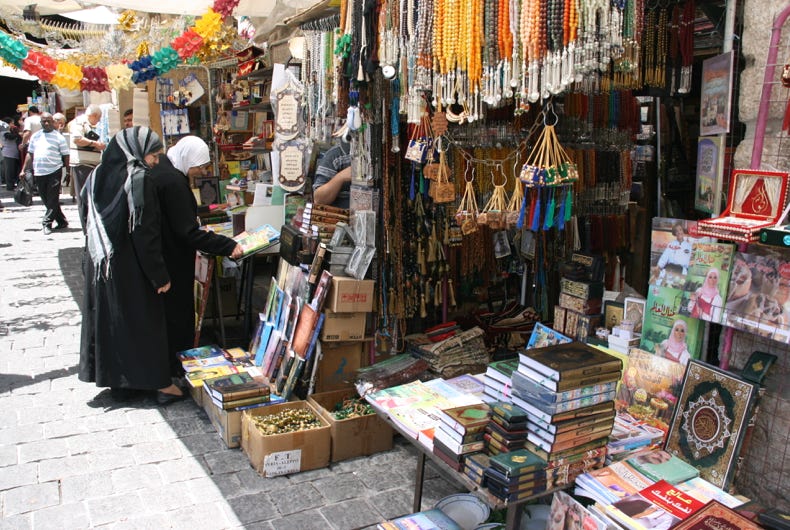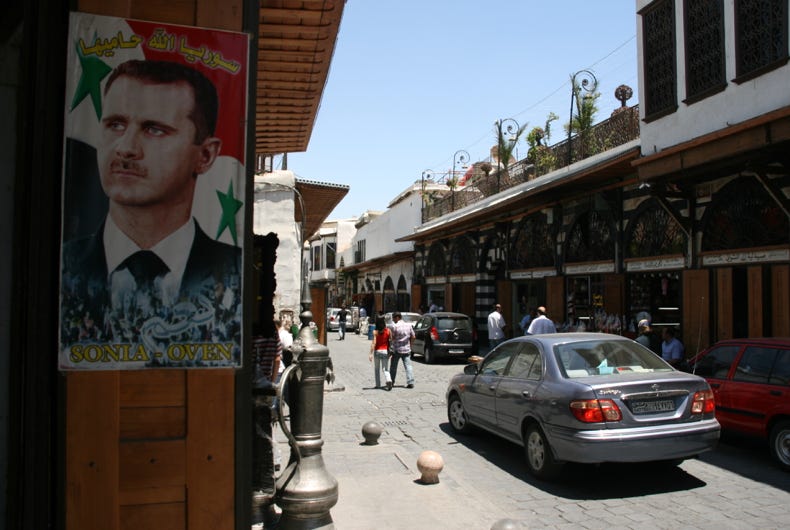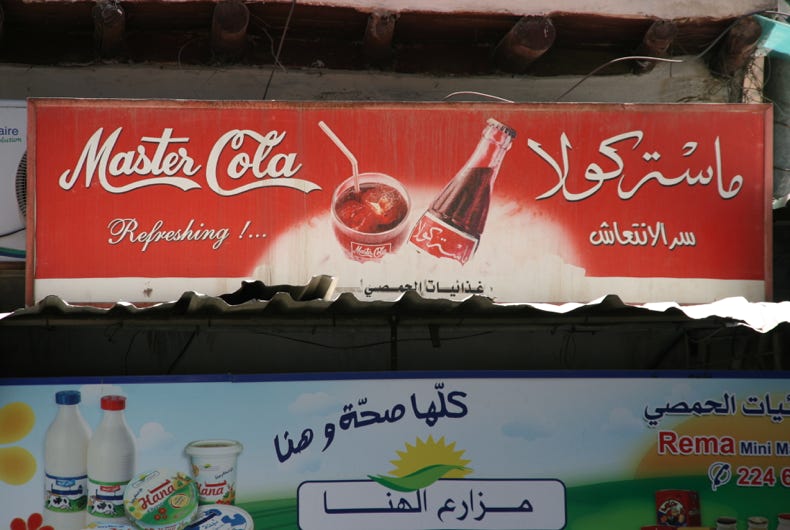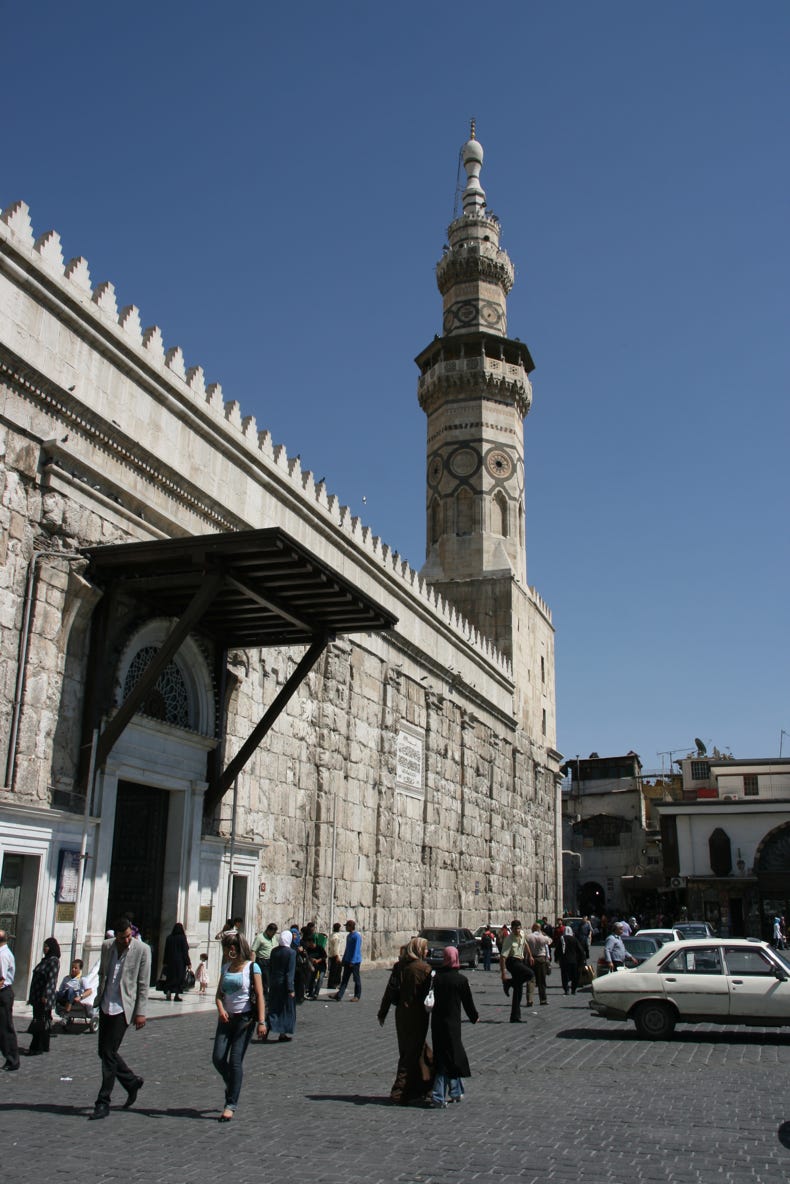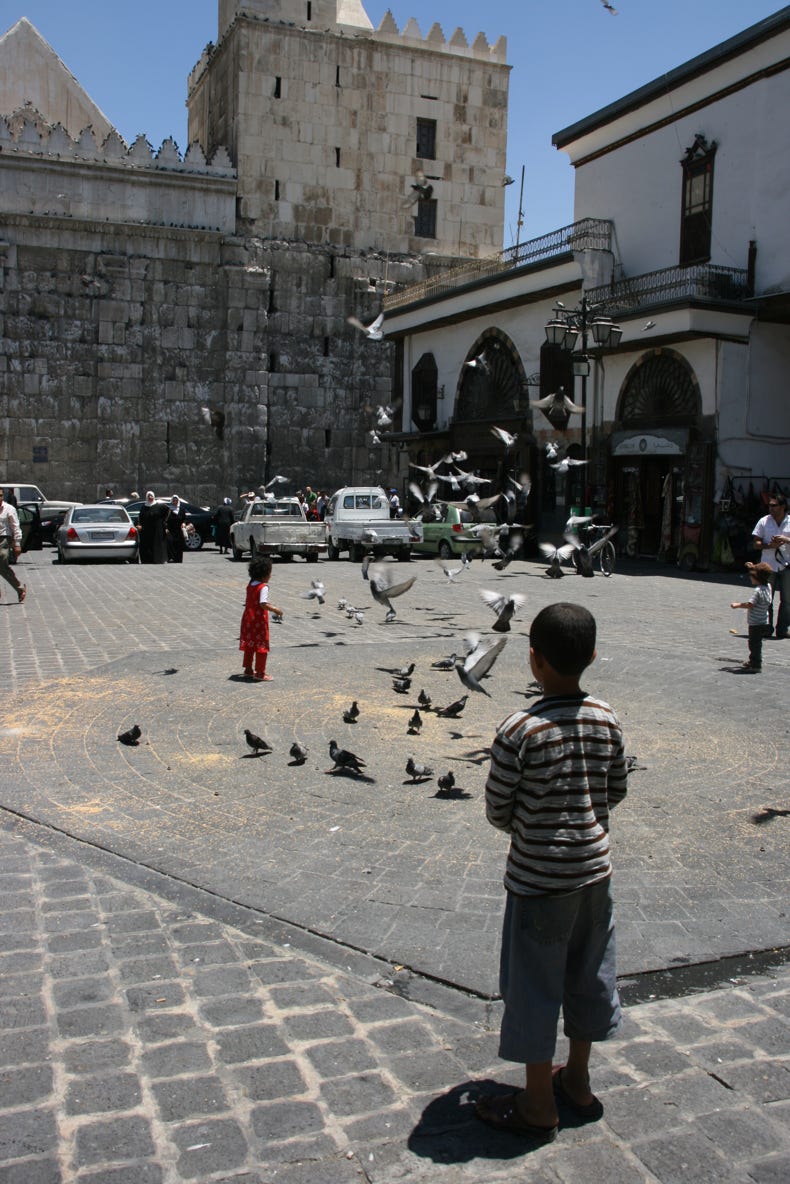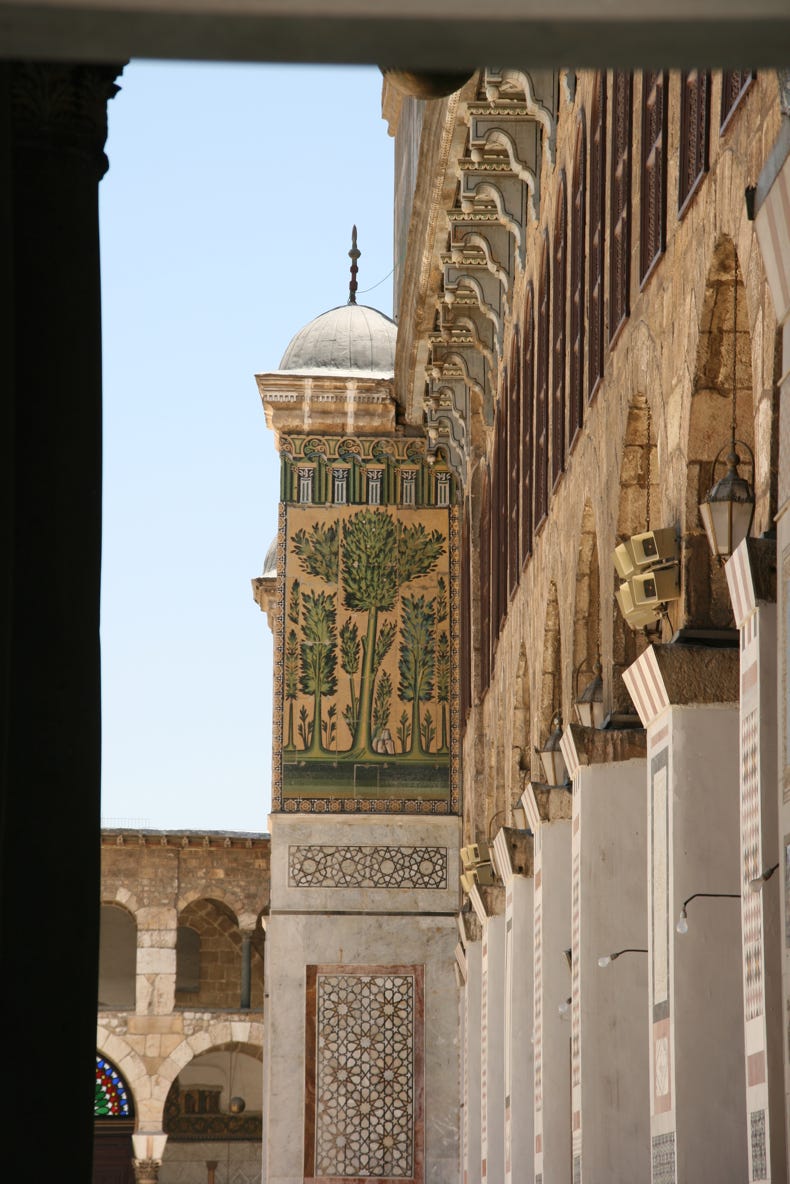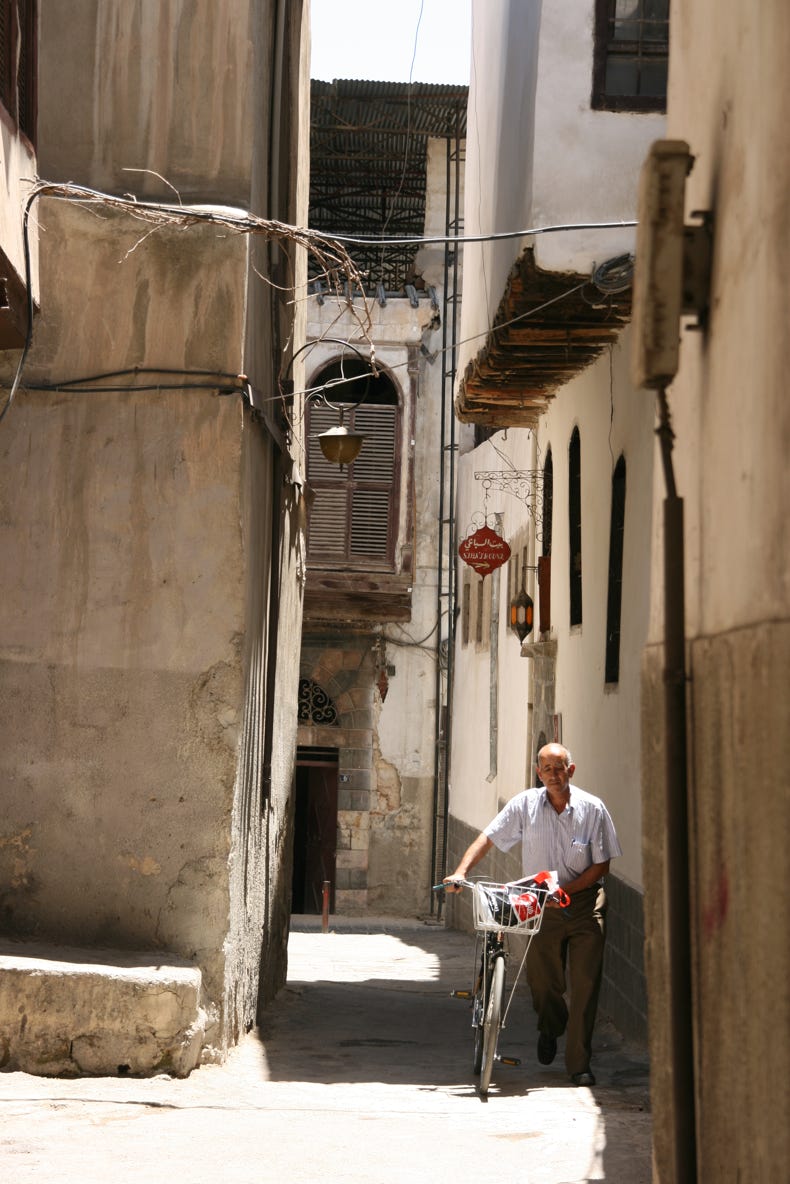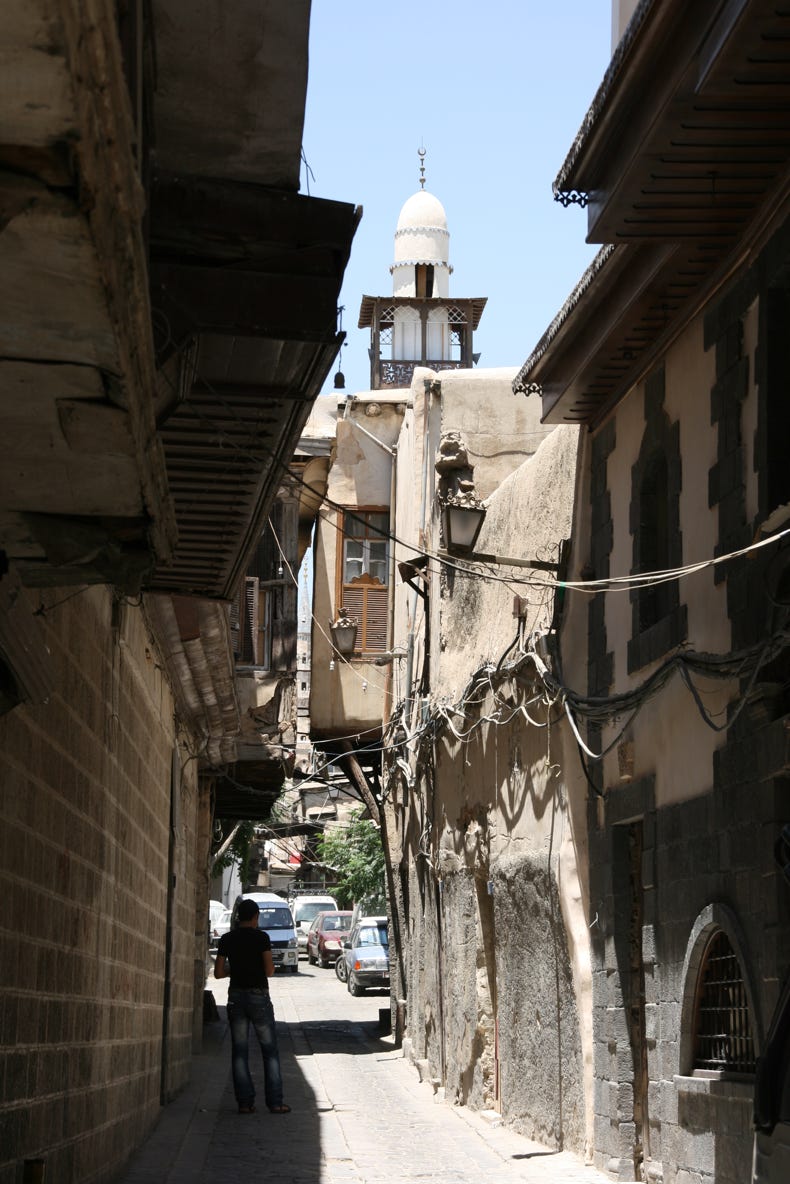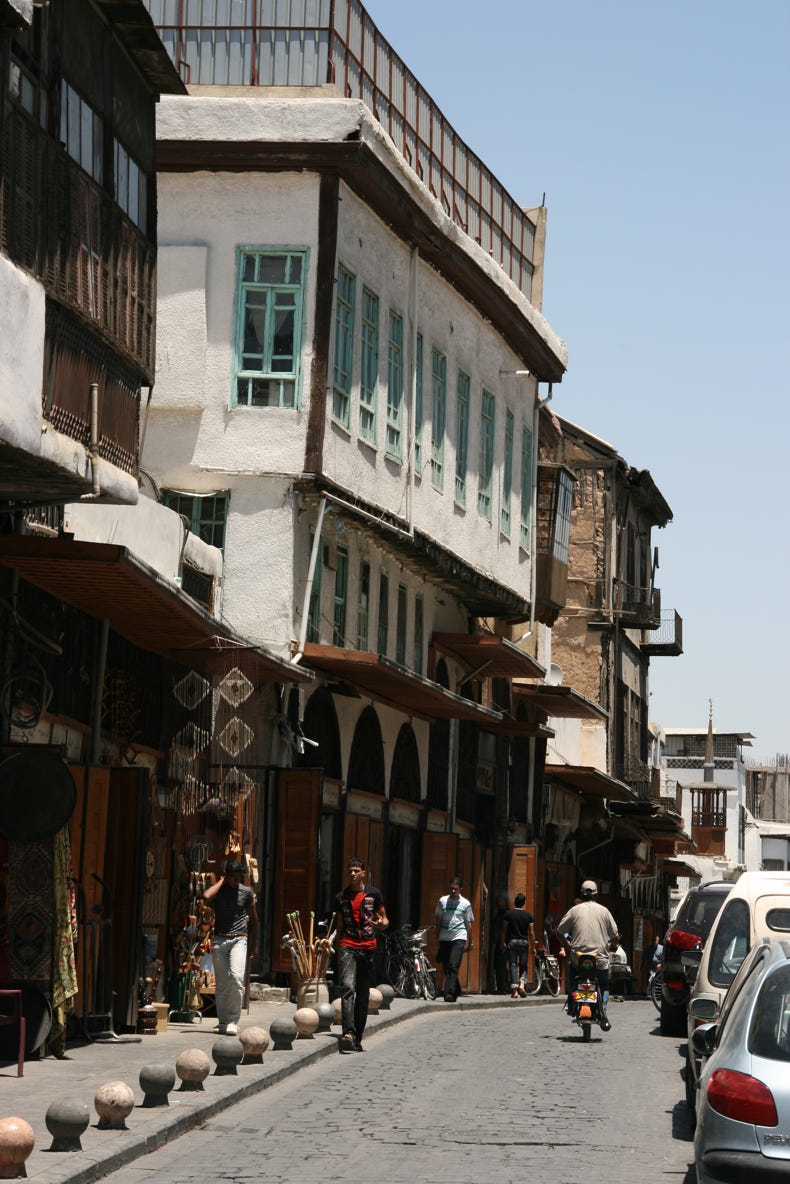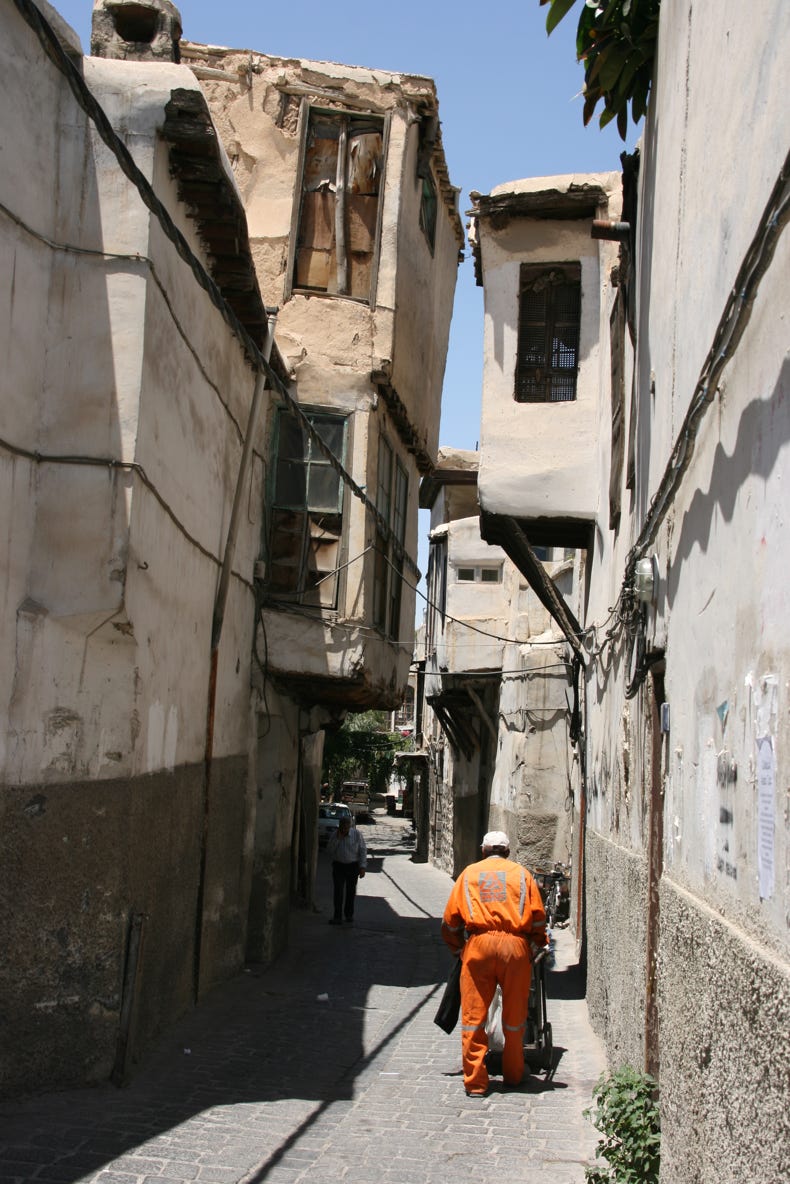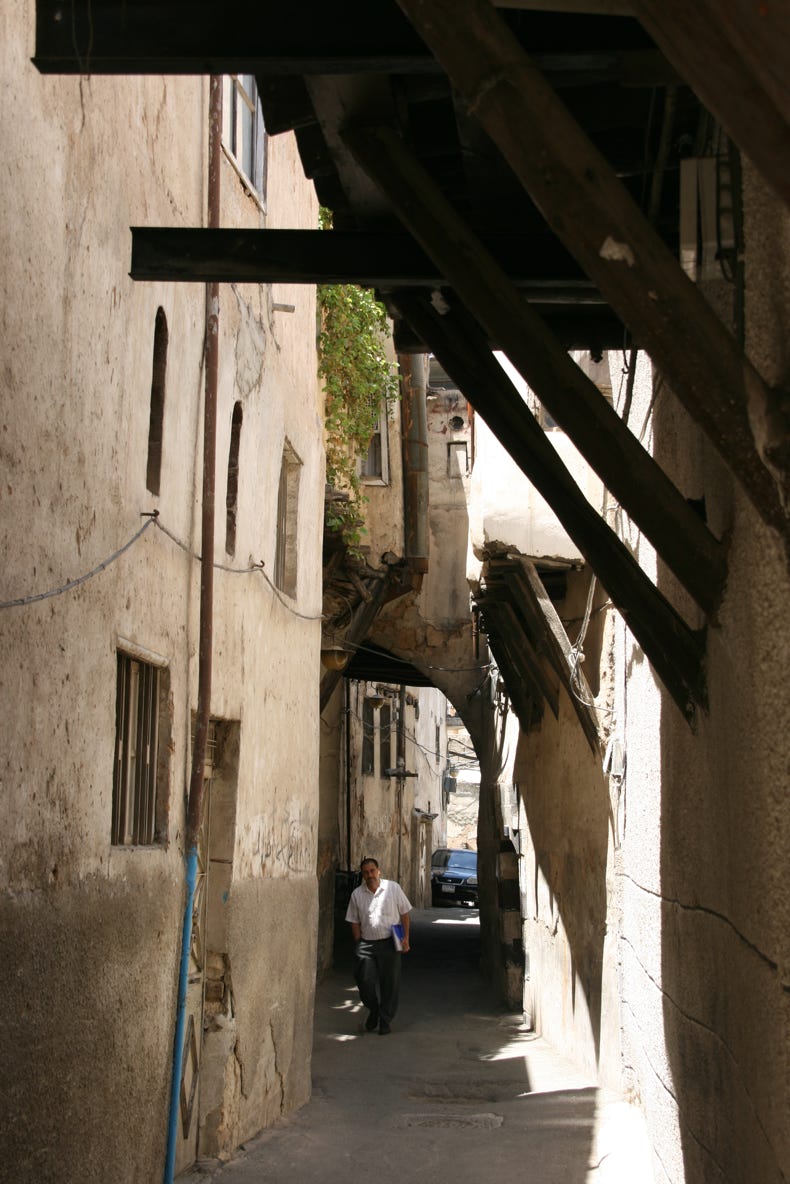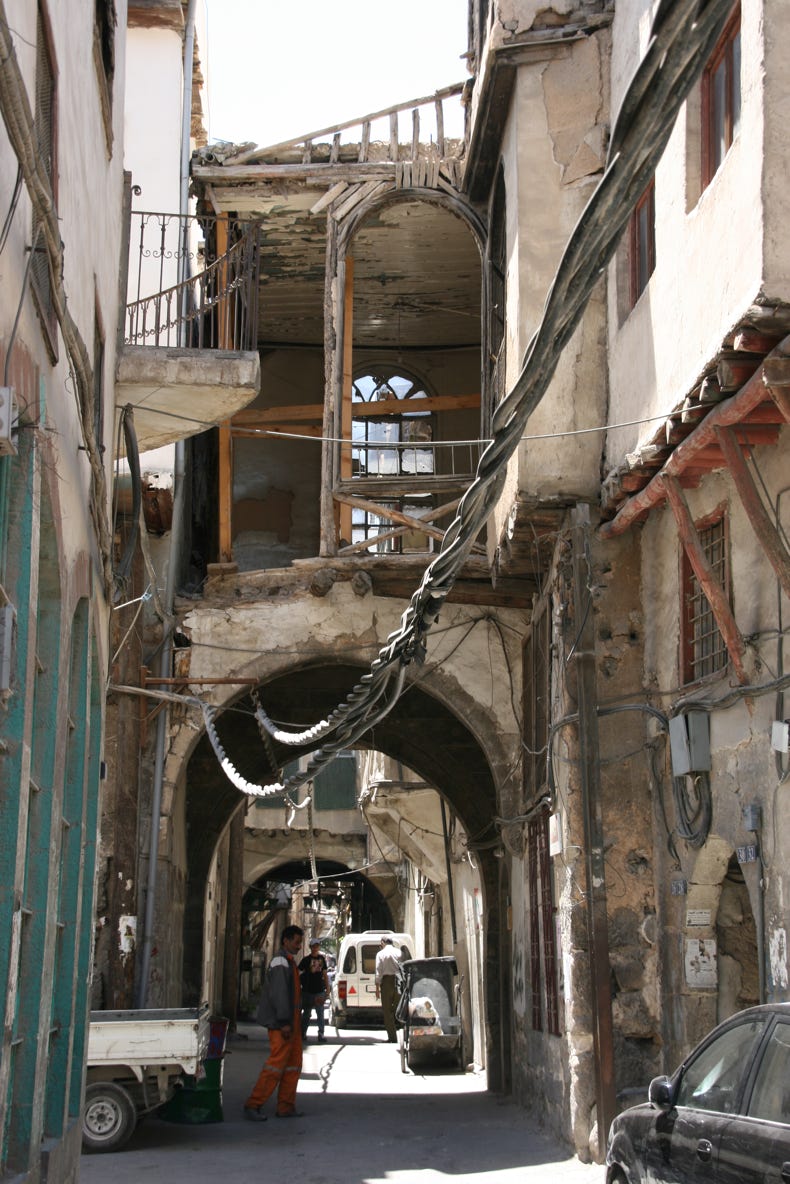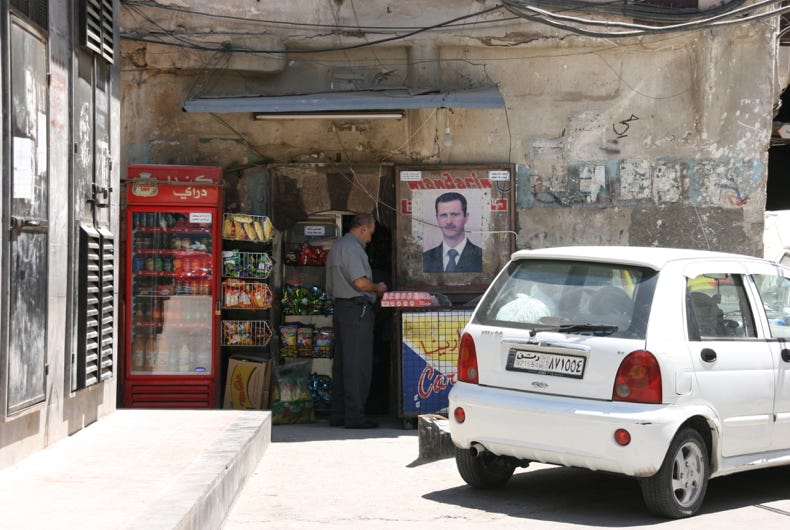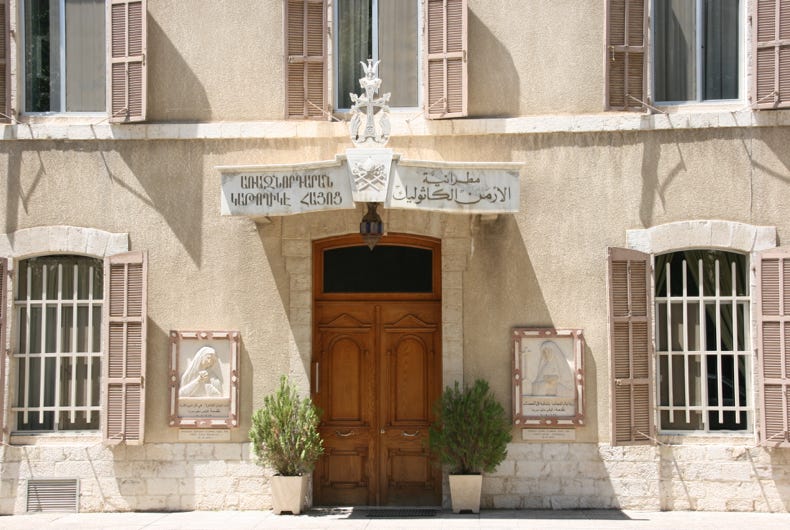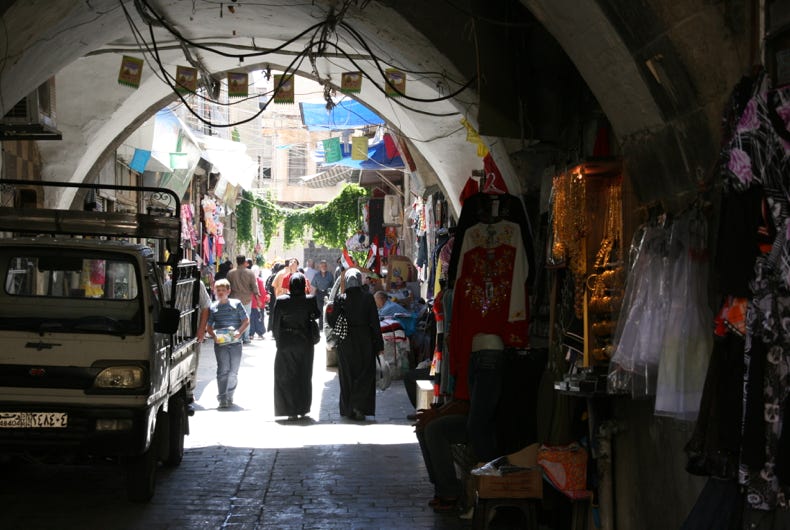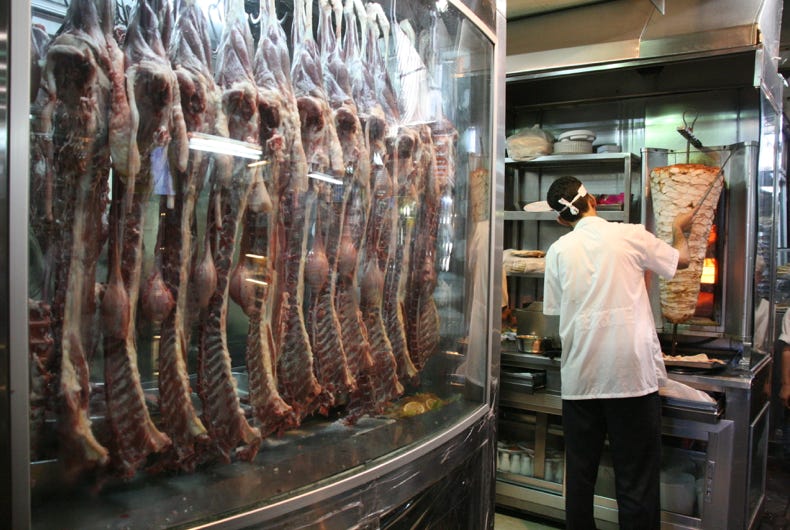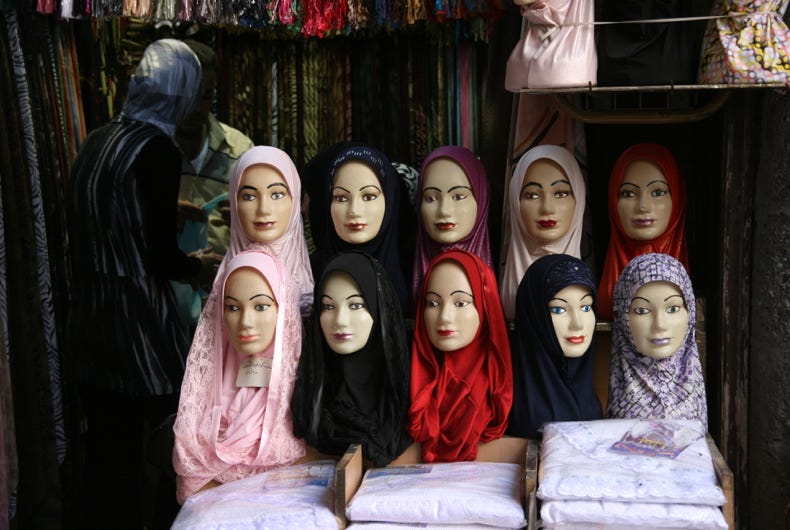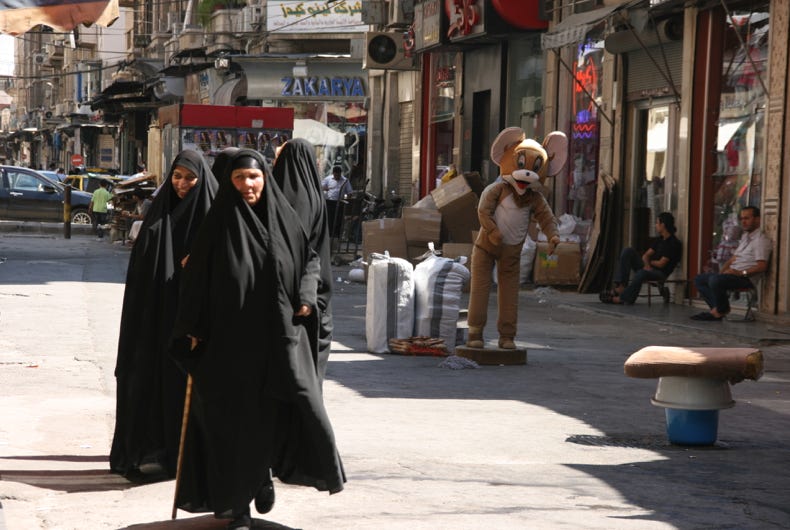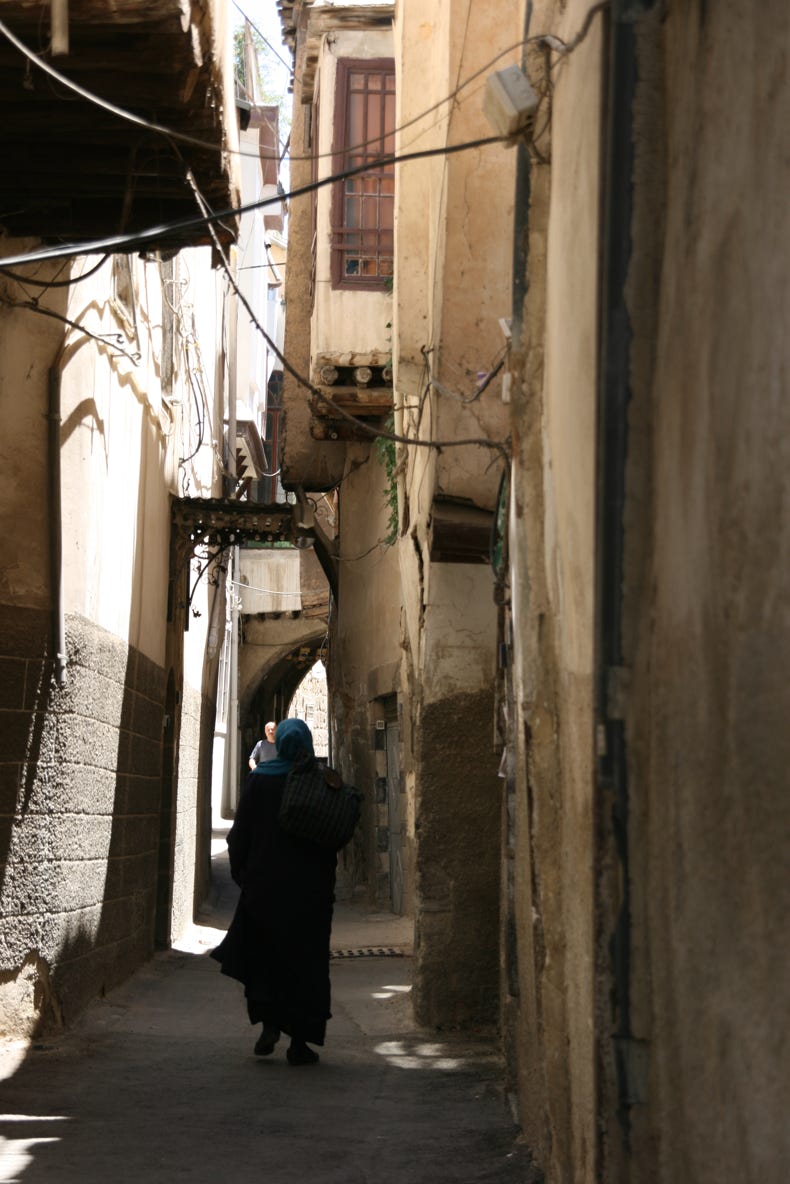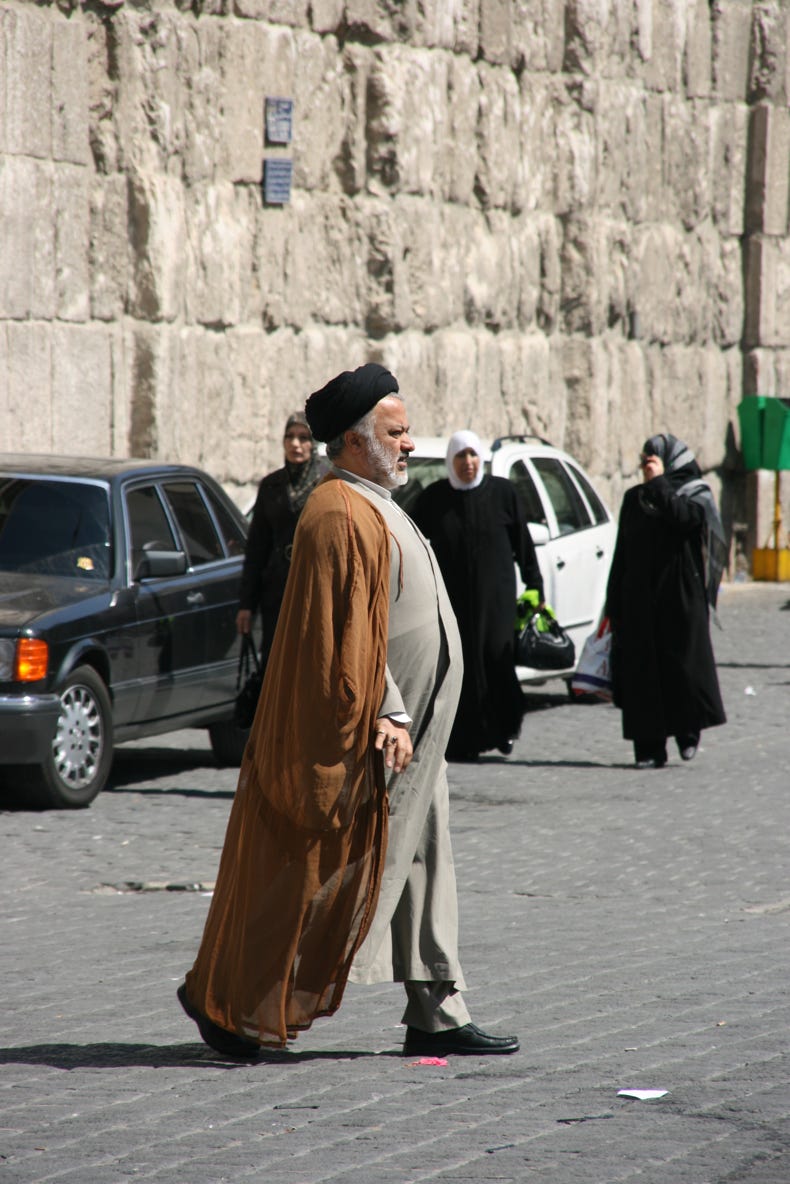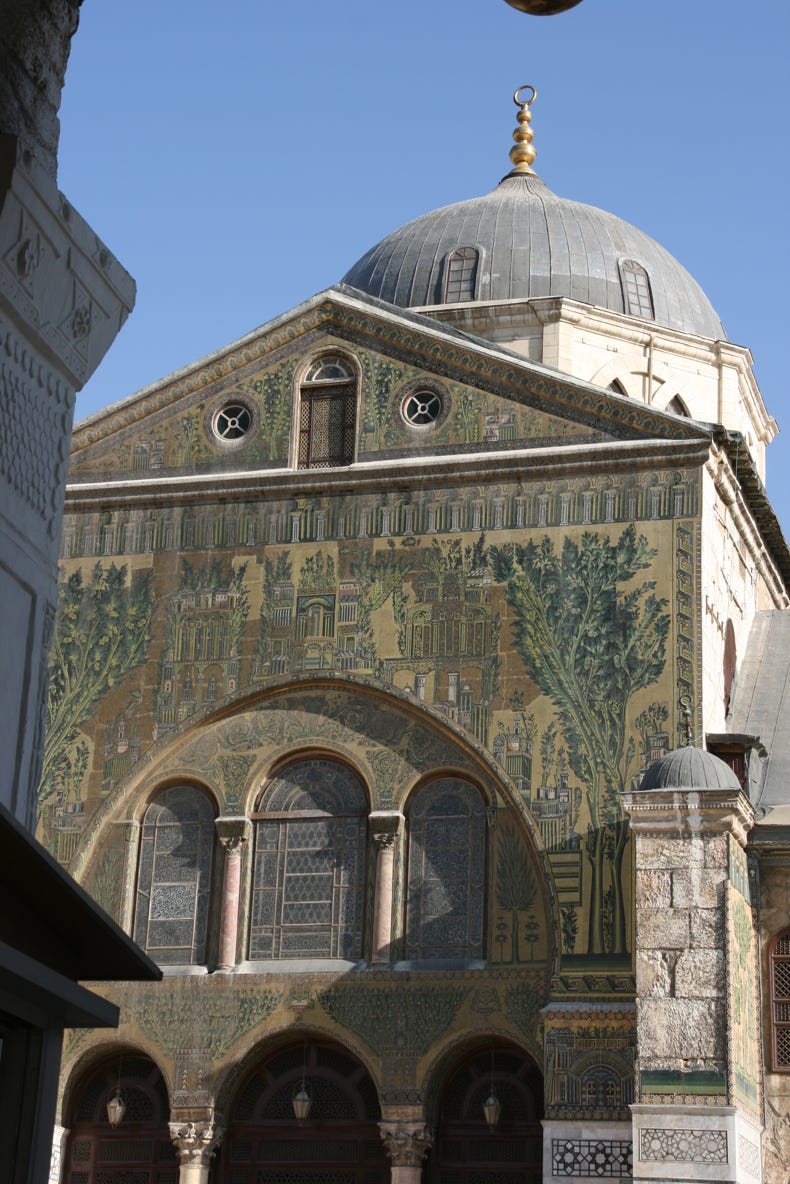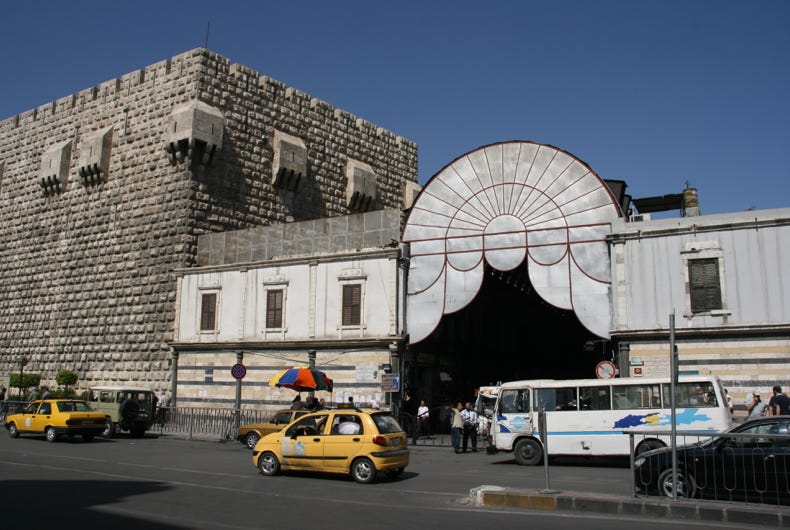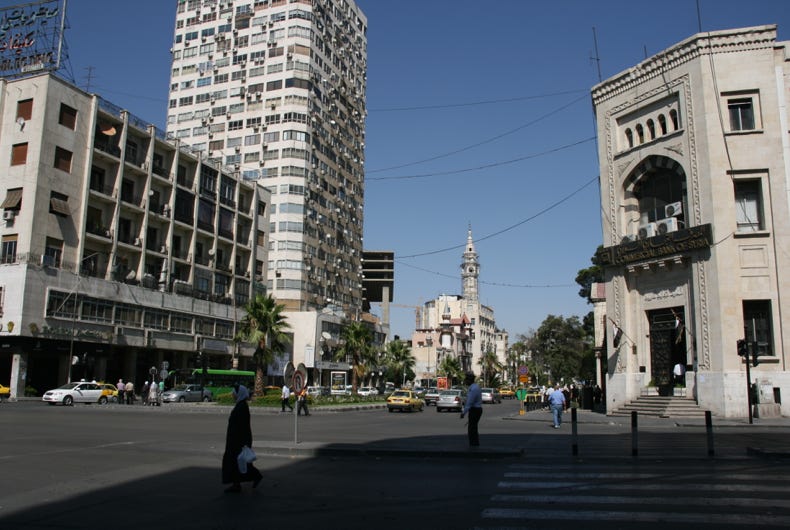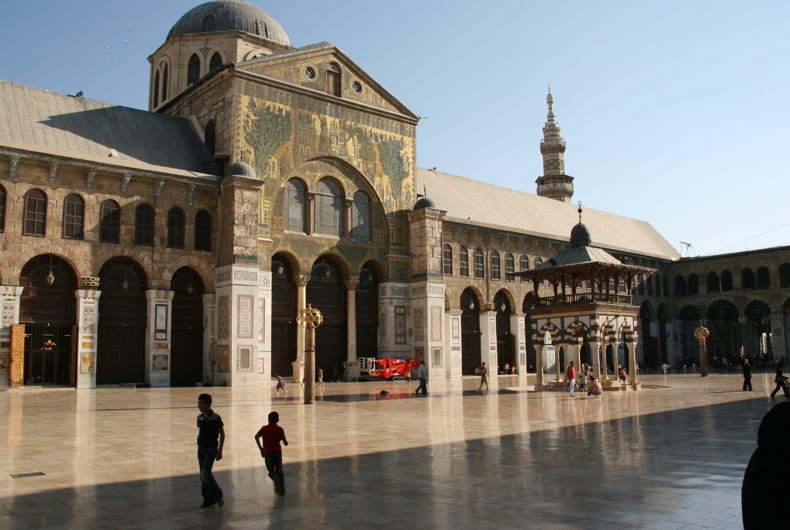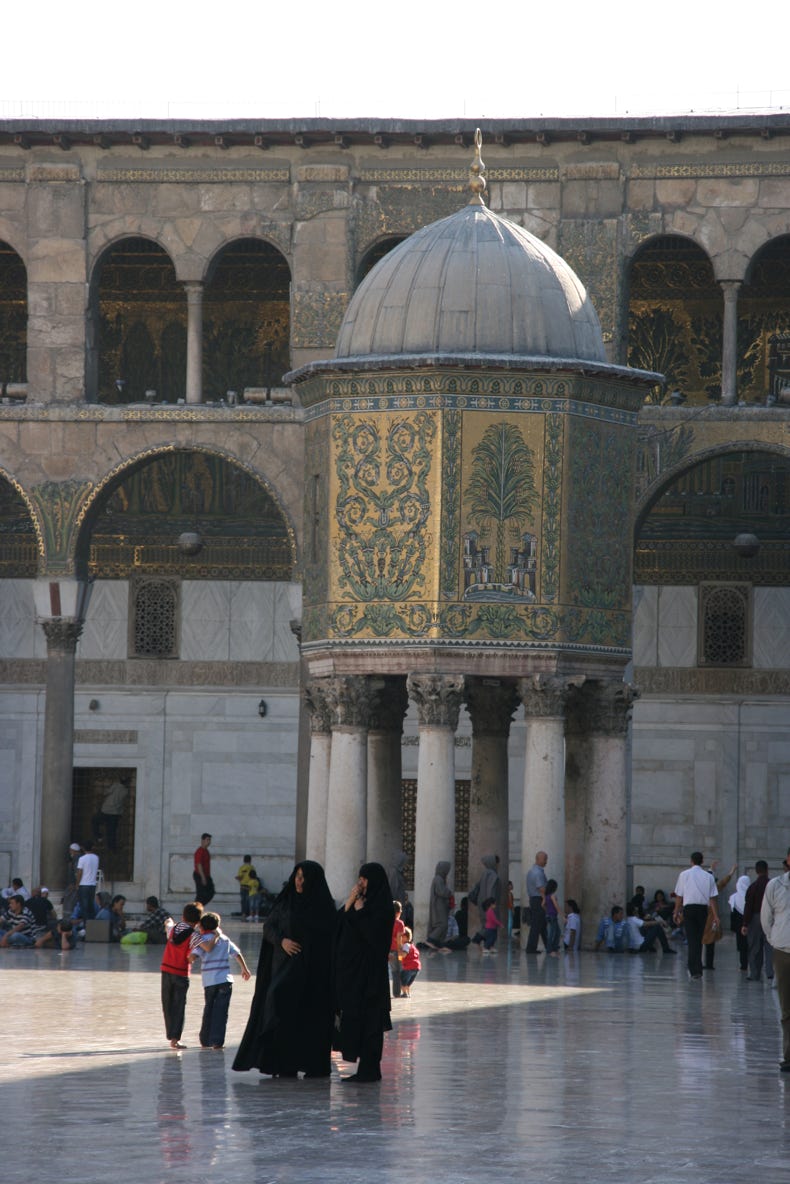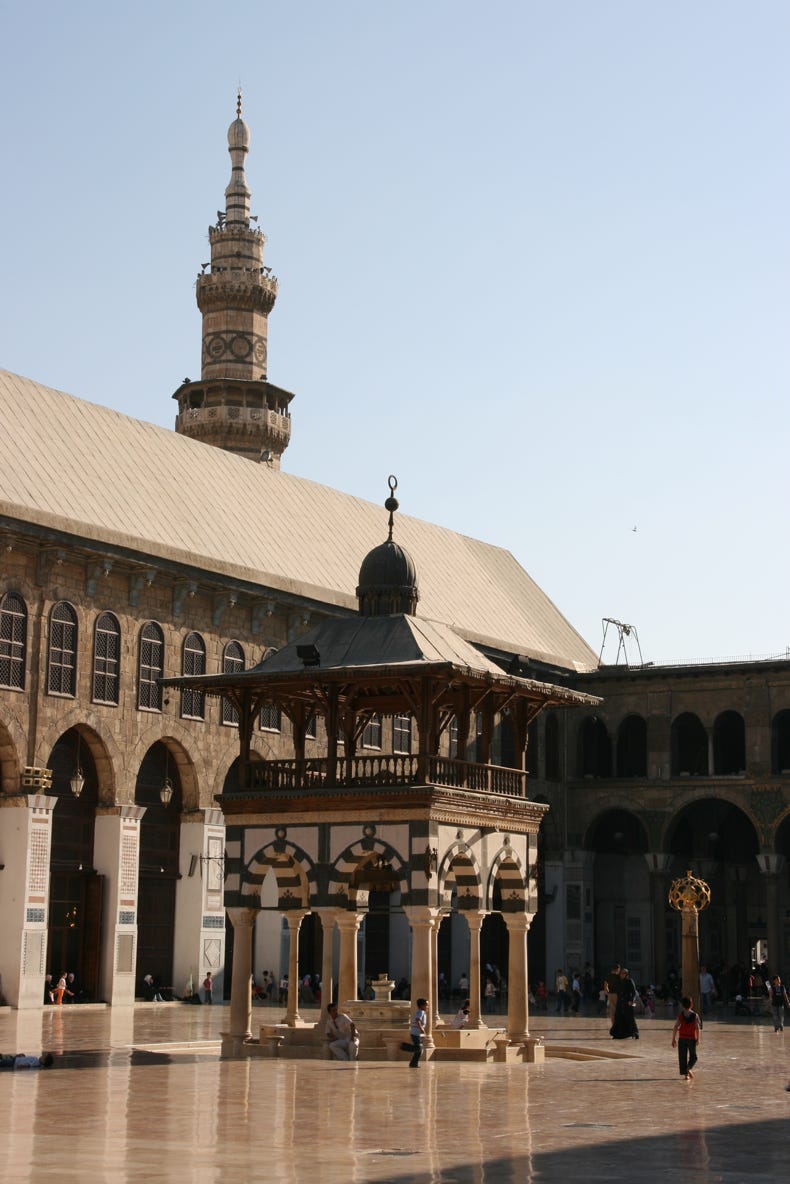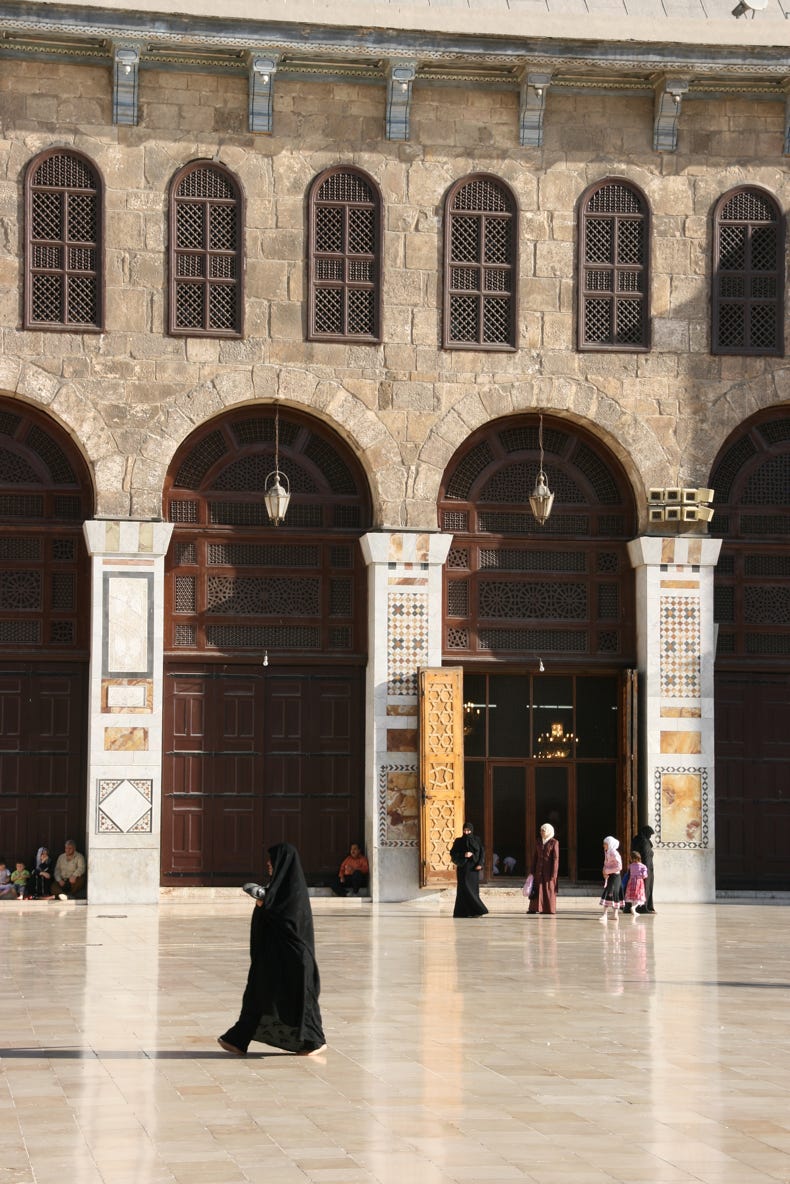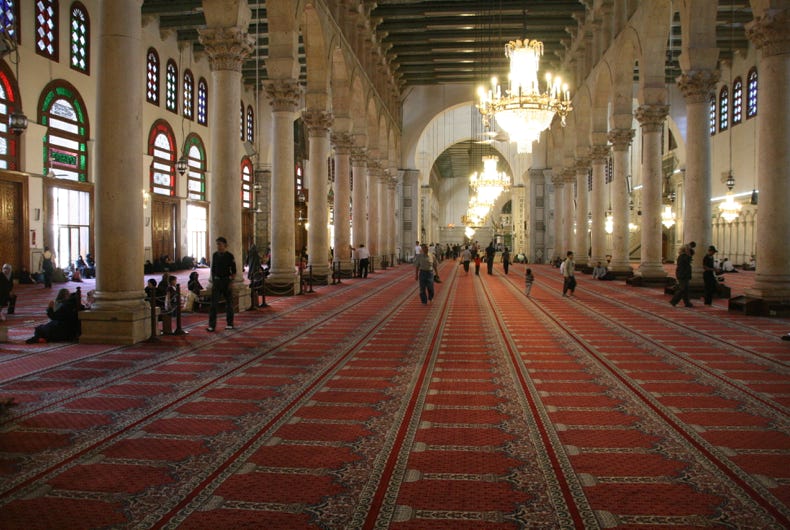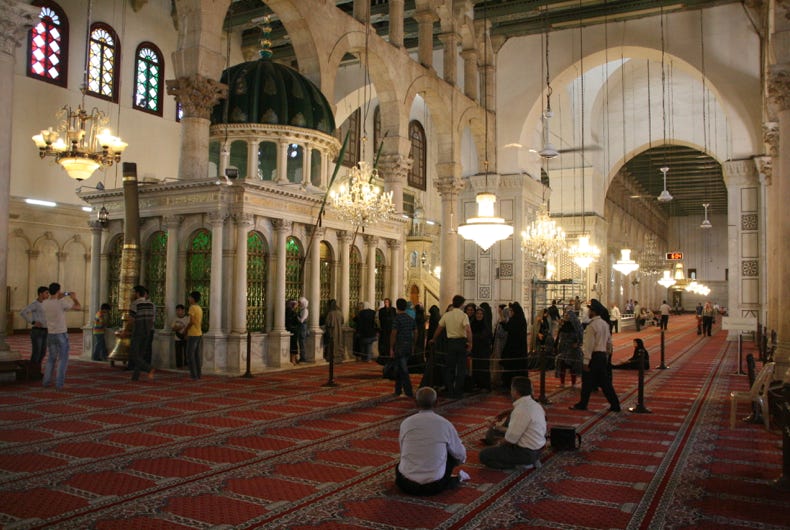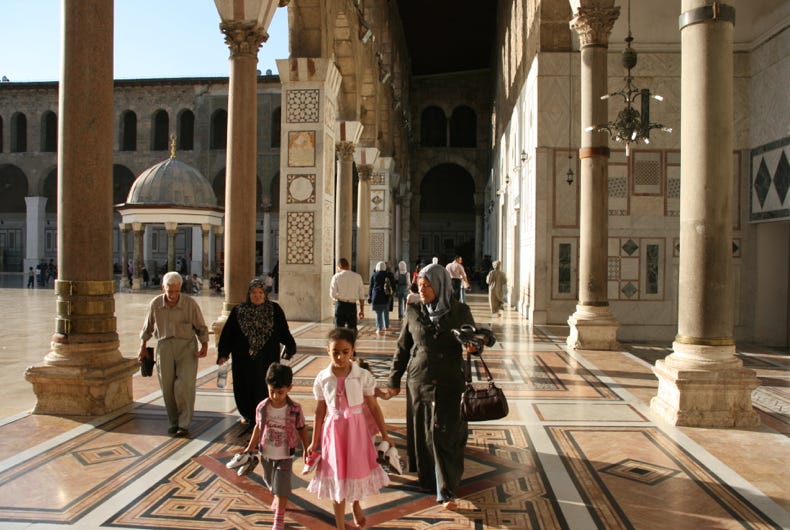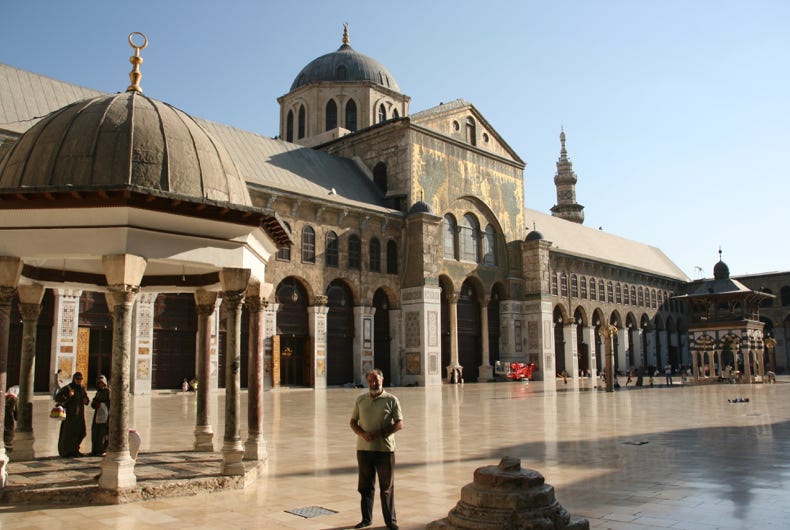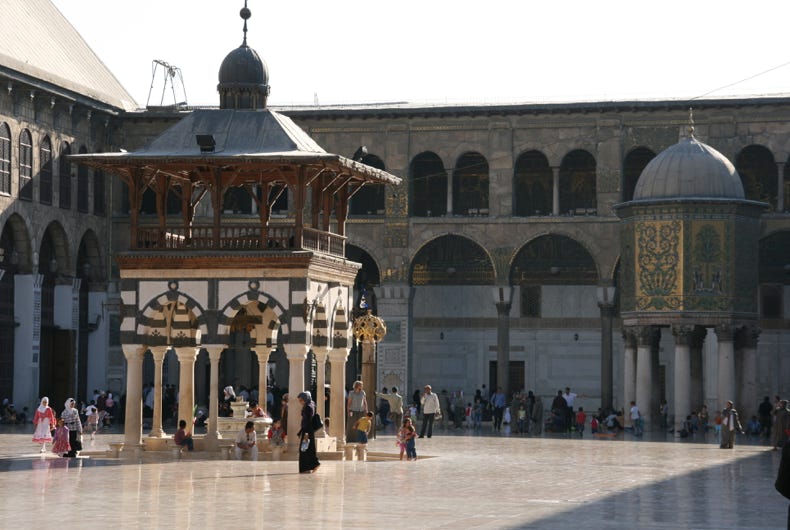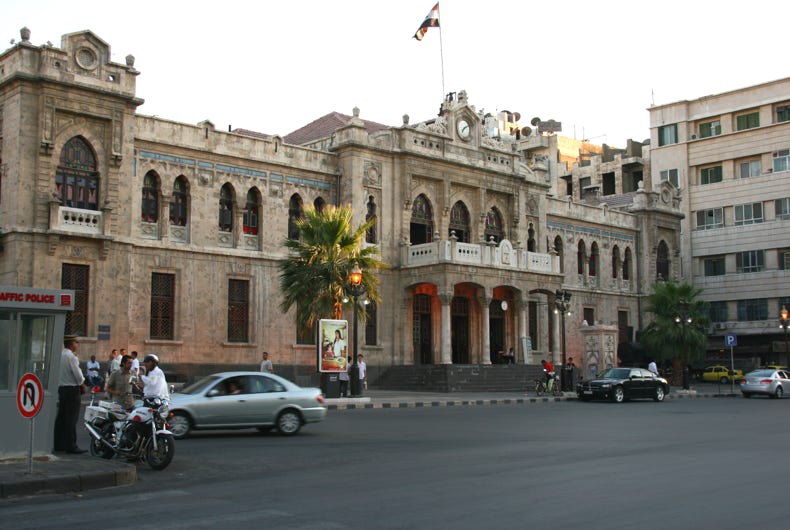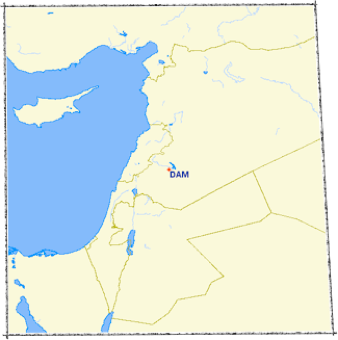
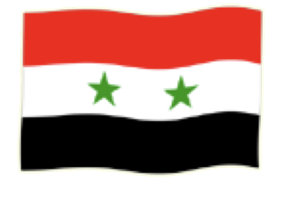

After the long day and late night yesterday, it felt only a little decadent to set the alarm clock for a late wake-up at 8:00 am. Breakfast felt marginally more decadent, with a feast of Middle Eastern food brought to our table – several types of bread, three types of jam (strawberry, apricot and fig), yogurt, hummus, boiled eggs, two types of olives, with coffee. It was a great start to our first full day in Syria.
Our first priority today was to book bus tickets for tomorrow’s trip to Hama. Luckily there was a small travel office just a block away from our hotel, meaning that we were able to reserve our tickets without a drive to the bus station at the edge of the city. After we finally received an internet password, I found that there was a mountain of work-related e-mails that took just over two hours (10 am to midday) to clear, partly because of the sheer number of messages, and partly because of the pathetically slow speed of our internet connection.
Finally, at a little after midday, we set out to explore our one and only destination for the day, the old walled city centre of Damascus. The entrance to the walled city was just 10 minutes walk from our hotel, and we were soon enveloped in a high, cavernous arcade of shops that formed the western entrance to the Old City, a market area known as the Souq al-Hamidyya. The arcade was constructed in the late 1800s, and the corrugated metal roof is still peppered with small bullet holes made by machine gun fire from French planes in 1925 when a nationalist rebellion was quelled.
The souq was an extensive network of alleyways that contained colourful little shops selling many types of goods to a broad cross-section of Syria’s diverse population. The two photos below, and the one above to the right, give a small idea of the vast range of interesting things to be seen.
After spending a couple of hours wandering through the souks, we ventured further east through the old city, passing old residential areas with extraordinary designs, including precariously overhanging rooms, interspersed with small shops and handicraft stalls, until we reached the Christian quarter towards the eastern end of the Old City.
Having reached the north-eastern city walls, we took a different route back to our hotel to have a short rest through the heat of the afternoon, pausing in our explorations between 3:45 pm and 5:00 pm.
At that time we set out again to visit what turned out to be the highlight of the day for us, the Umayyad Mosque.
Located at the eastern end of the Souq al-Hamidyya, we had admired the exterior of the mosque during our earlier walk, but this time our intention was to enter the mosque, this being one of the few mosques that allows non-Muslims to enter – and to photograph freely as well.
The mosque was a stunningly beautiful piece of architecture, as you can see from the photographs which show our initial view as we entered the main courtyard from the northern side and some interior views. Considered one of Islam’s holiest sites, the mosque was converted in 705 AD from a former Byzantine Christian church, which was in turn built on the site of a former temple dedicated to Jupiter.
What was especially impressive about the mosque was the atmosphere in the large outside courtyard. Rather than being a sombre place, it was truly a place of community gathering, with children running around and playing, adults chatting to each other in groups, and others sitting in the shade contemplating… whatever. Groups of pilgrims were standing in groups having their photos taken, and the overall atmosphere was extremely relaxed and welcoming.
Spanning the entire length of the building on the southern side of the courtyard was a huge prayer hall. We were also warmly welcomed into the prayer hall, which was divided one-third/two-thirds for women and men, and even invited to take photos (as many of the local people and pilgrims were doing also).
In one of the interior photos, the women’s area can be seen to the left of the row of pillars. In another interior photo, the green domed structure is the mosque’s most important shrine, a shrine to John the Baptist (known to Muslims as the Prophet Yehia). It is claimed that the shrine contains the severed head of John the Baptist. The mosque contains the tombs of several other significant people, including Hussein, the son of Ali and grandson of the Prophet Mohammed.
It was a privilege to be welcomed into the mosque, and we made the most of it by staying for a couple of hours, taking the time to sit down in the late afternoon shade and take in the experience before finally heading off to a Syrian style dinner in a small café near our hotel.
It was yet another extraordinarily enjoyable and stimulating day, and one where we had a true sense of being immersed deeply into the heart of Middle Eastern culture.

